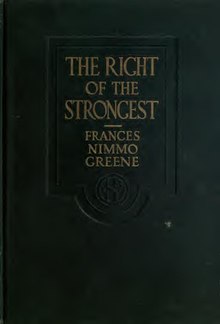Plot
The story is set in a rugged mountain-rimmed valley of Alabama. [2] It is a story of mountain feuds, and of a modern business scheme that involved buying up the squatters' patches of land that belong by right only to the strongest. John Marshall has a vision of the whole valley in which this group of mountain dwellers live being converted into a reservoir for all-round-the-year usage, for the generation of electric power to run a yet unbuilt city twenty miles away, where two yet unbuilt railroads shall cross to carry away the steel that is yet to be mined and melted and moulded. The valley dwellers resent this invasion of the outer world, and John Marshall, falling in love with Mary Elizabeth, who has dedicated her life to educating these people, finds in her idealism and Puritanism a stubbornness of misunderstanding and harsh judgment that makes the conflict between love and business a fierce one. He discovers that her father was not a traitor to his people, and that the "bad man" of the book was the real villain. Finally, he gives up the secrets of his fight for modernising this region in order that Mary Elizabeth, by warning her people against him, may convince the native dwellers of her devotion to any cause that is theirs. But he fights on and finally prevails on the last man who holds out to sell his land. From the others whose titles are defective, he merely takes it. The final chapters of the book are taken up with Mary Elizabeth's pleadings for the rights of the valley dwellers to the homes of their fathers in the face of his implacable vision of civilising the community at whatever cost to the few. There is the final stand of the people against Marshall, the battle in which he is desperately wounded, and finally, the temporary triumph of the ideal over the material in Mary Elizabeth's order for the freeing of the "hillites" before the sheriff and his posse reach them. John Marshall lies a very sick man as she puts her hand over his mouth and gives this order, to which, perforce, he subscribes. [3]
This page is based on this
Wikipedia article Text is available under the
CC BY-SA 4.0 license; additional terms may apply.
Images, videos and audio are available under their respective licenses.
